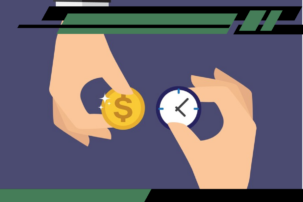Digital wallets: are they a good option for low-income canadians?

Digital wallets are becoming increasingly popular as more people move away from cash and traditional banking methods. They offer fast, secure, and convenient ways to make payments using smartphones or other devices.
But are digital wallets a good option for low-income Canadians? While they provide benefits such as no banking fees, easy access to transactions, and better security, they also come with potential drawbacks, like limited acceptance and dependence on technology.
In this article, we will explore how digital wallets work, their advantages and disadvantages, and whether they are a smart financial tool for Canadians looking to manage their money efficiently.
What is a digital wallet?
A digital wallet is an electronic payment system that stores debit, credit, or prepaid card information securely on a smartphone, tablet, or computer. It allows users to make purchases, send money, and manage their finances without needing physical cards or cash.
Popular digital wallets in Canada include:
- Apple Pay (for iOS users)
- Google Pay (available on Android and iOS)
- PayPal (widely used for online transactions)
- Samsung Pay (compatible with Samsung devices)
Unlike traditional banking, digital wallets use encryption and tokenization to protect financial information, making transactions more secure than carrying physical cards.
How do digital wallets work?
Digital wallets use Near Field Communication (NFC) or QR codes to process payments. When making a purchase, users simply tap their phone on a payment terminal or scan a QR code instead of inserting a card.
Below is a comparison of some of the most popular digital wallets available in Canada:
Digital Wallet | Supported Devices | Main Features | Fees |
Apple Pay | iOS devices | Contactless payments, security features | No fees |
Google Pay | Android & iOS | Online and in-store payments, rewards | No fees |
PayPal | Any device | Online transactions, international payments | Possible transfer fees |
Samsung Pay | Samsung devices | Works with NFC and Magnetic Secure Transmission | No fees |
Setting up a digital wallet
- Download the app from the App Store or Google Play.
- Link a bank account, debit card, or credit card.
- Set up security features like biometric authentication (fingerprint or face ID).
- Use the wallet to tap and pay at stores, shop online, or transfer money.
Advantages of using digital wallets
Convenience and accessibility
One of the biggest benefits of digital wallets is their ease of use. Users don’t need to carry cash or physical cards, and payments are processed instantly. Many online stores also accept digital wallet transactions, making shopping more convenient.
Cost savings and financial management
Many low-income Canadians struggle with banking fees, but digital wallets often do not charge monthly maintenance fees. Some wallets also offer cashback rewards or discounts when shopping at select stores. Additionally, digital wallets help users track their spending, as transactions are automatically recorded in the app.
Security and fraud protection
Unlike traditional debit or credit cards, digital wallets use encryption, biometric authentication, and tokenization to protect personal data. This reduces the risk of card theft or fraud, providing an added layer of security.
Potential drawbacks of digital wallets
Limited acceptance
While digital wallets are widely accepted in large retail stores, some small businesses, rural areas, and local markets may not have the necessary technology to process these payments. This means users might still need to carry cash or a debit card as a backup.
Dependence on technology
To use a digital wallet, a smartphone and internet connection are required. If a phone is lost, stolen, or runs out of battery, users may lose access to their funds temporarily. This can be a major inconvenience, especially in emergencies.
Privacy concerns
Some digital wallets track spending habits and collect user data for marketing purposes. While this helps offer personalized deals and promotions, it can also raise privacy concerns. Users should carefully read the terms of service before signing up.
Are digital wallets a good option for low-income Canadians?
Pros for low-income users
- No fees for basic transactions, reducing banking costs.
- Easy to use, even without a traditional bank account.
- Some digital wallets provide budgeting tools to track expenses.
Cons for low-income users
- Requires a smartphone and internet, which may not be affordable for everyone.
- Some government benefits cannot be deposited into digital wallets.
- Can encourage impulse spending due to the ease of transactions.
Best digital wallets for low-income Canadians
- Google Pay & Apple Pay – Best for zero fees and easy integration with debit cards.
- PayPal – Useful for online shopping and international transfers.
- Cash App – Allows peer-to-peer transfers without needing a bank account.
How to start using a digital wallet
Getting started with a digital wallet is a simple process that requires just a few steps. The first step is to choose a digital wallet that is compatible with your smartphone and banking institution. Popular options in Canada include Apple Pay, Google Pay, PayPal, and Samsung Pay. It is important to verify that the digital wallet you choose works with your debit or credit card, as not all banks support every digital wallet provider.
Once you have chosen the right digital wallet, the next step is to download the app from the App Store (for iOS users) or Google Play Store (for Android users). After installing the app, you will be required to set up an account and link your bank account, debit card, or credit card to enable transactions. Some digital wallets also allow users to add loyalty cards and store coupons for additional savings.
Security is a crucial aspect of using a digital wallet. To ensure your account is protected, it is recommended to set up biometric authentication, such as fingerprint or facial recognition. Many digital wallets also require a PIN or password for added security. These features help protect financial information in case the device is lost or stolen.
Once the setup is complete, users can start making contactless payments at stores, shopping online, or sending money to friends and family. Most retailers now accept tap-to-pay transactions, allowing digital wallet users to complete purchases quickly and securely. Some digital wallets also offer features like spending trackers and budget planners, which can help low-income individuals manage their finances more effectively.
For those new to digital payments, it may be useful to start by using a digital wallet for small transactions before fully transitioning away from traditional banking methods. Understanding the fees, limits, and security settings of your chosen digital wallet will ensure a smooth and secure experience. For more insights on managing finances and digital banking solutions, check out this guide on the Canada Pension Plan (CPP).
Digital wallets provide a secure and convenient way to manage money and make payments. They eliminate the need for cash and physical cards, offer faster transactions, and often come with no banking fees. However, limited acceptance, privacy concerns, and dependence on technology are factors to consider before fully transitioning to digital payments.
For low-income Canadians, digital wallets can be a useful tool for budgeting and reducing banking fees, but they may not fully replace traditional banking for everyone. Choosing the right digital wallet and using it responsibly can help improve financial management and accessibility to modern payment methods.
Want to learn more about financial security? Check out this guide on the Canada Pension Plan (CPP) for insights on retirement planning and financial stability.
Related content

Canada Workers Benefit: What it is, who can get it and how to apply

How to Build Credit from Scratch: Practical Steps for Canadians

Capital gains tax in Canada: what you need to know and how to minimize it

How to Access Government Grants and Benefits for Low-Income Canadians

Understanding the Canada Pension Plan (CPP): Is It Enough for Your Retirement?
